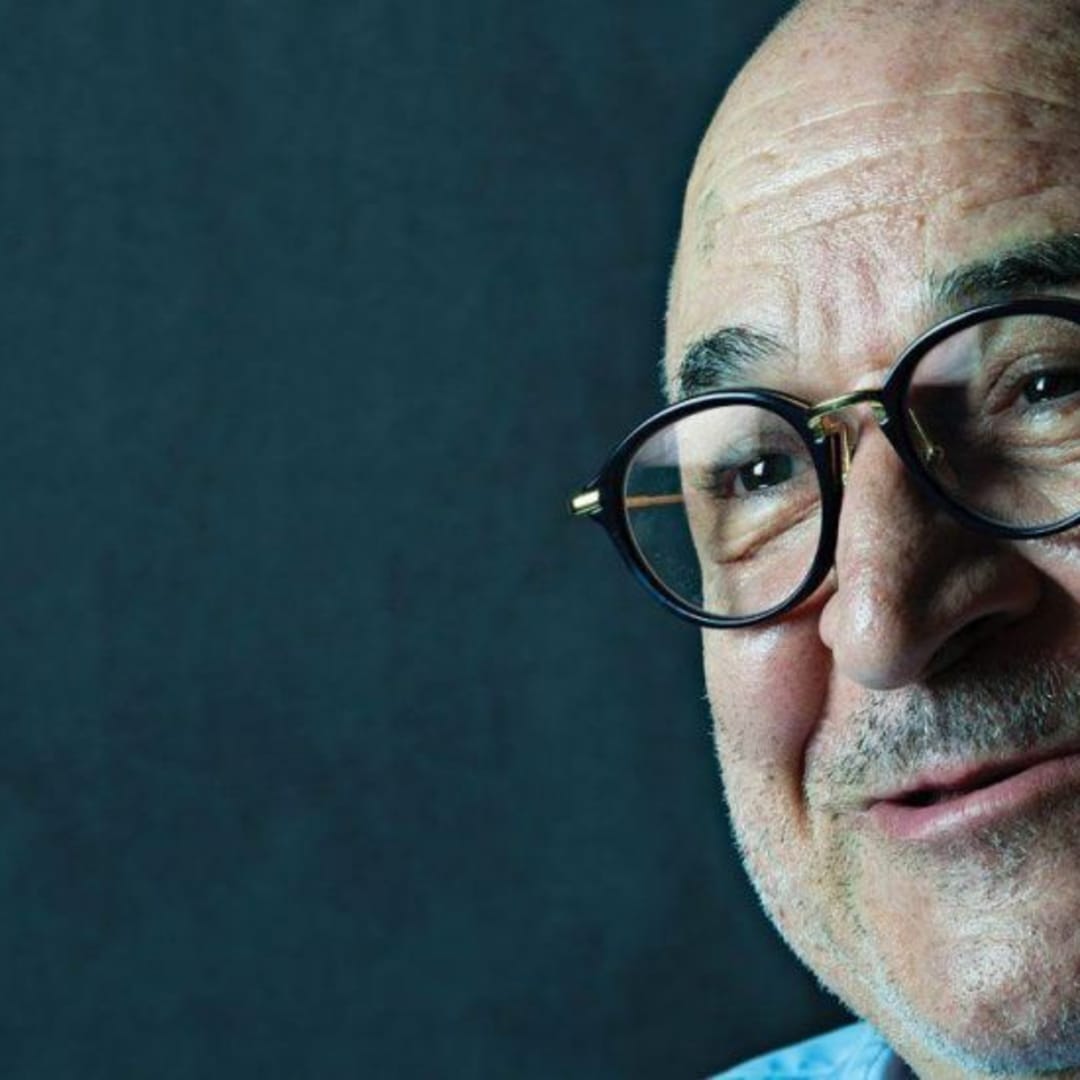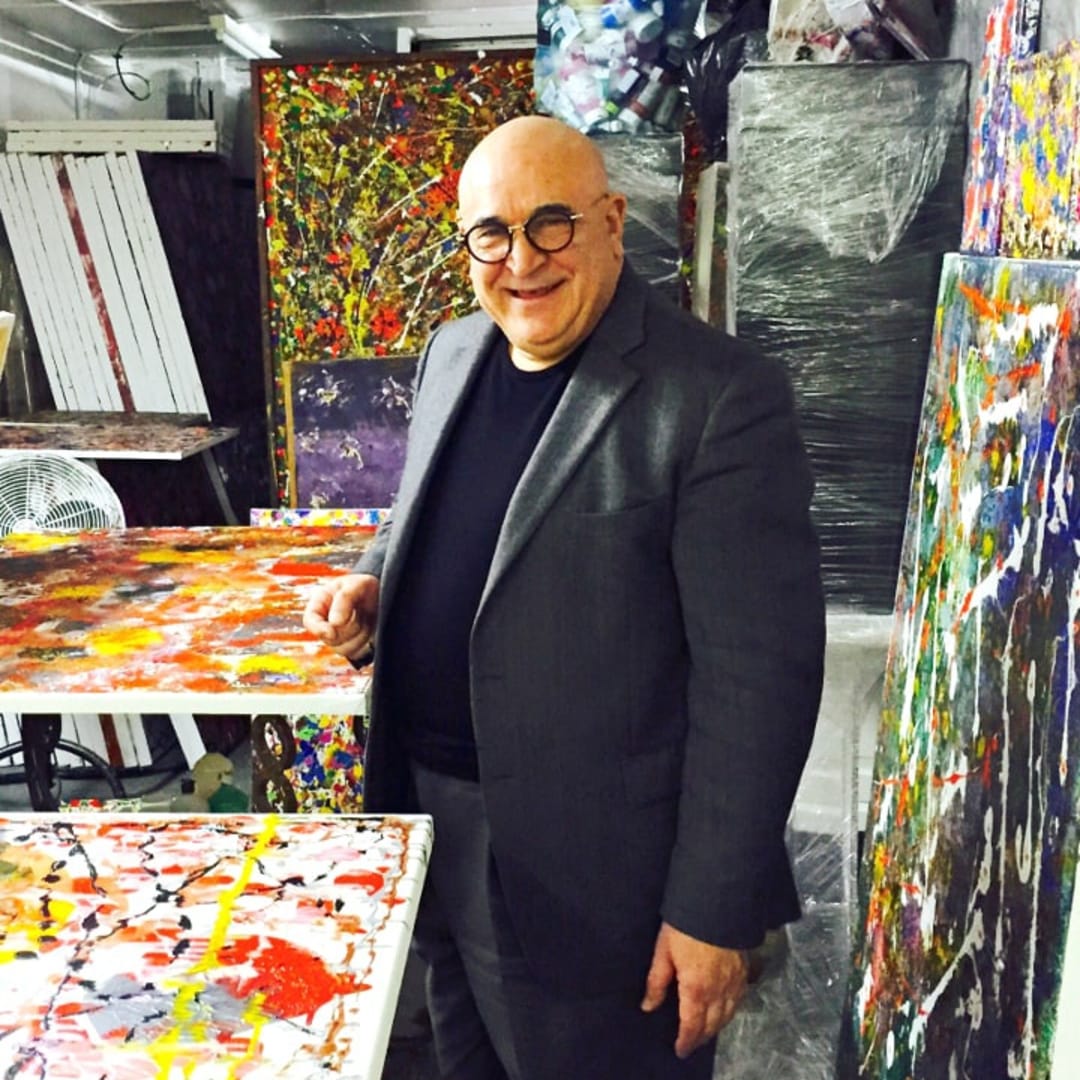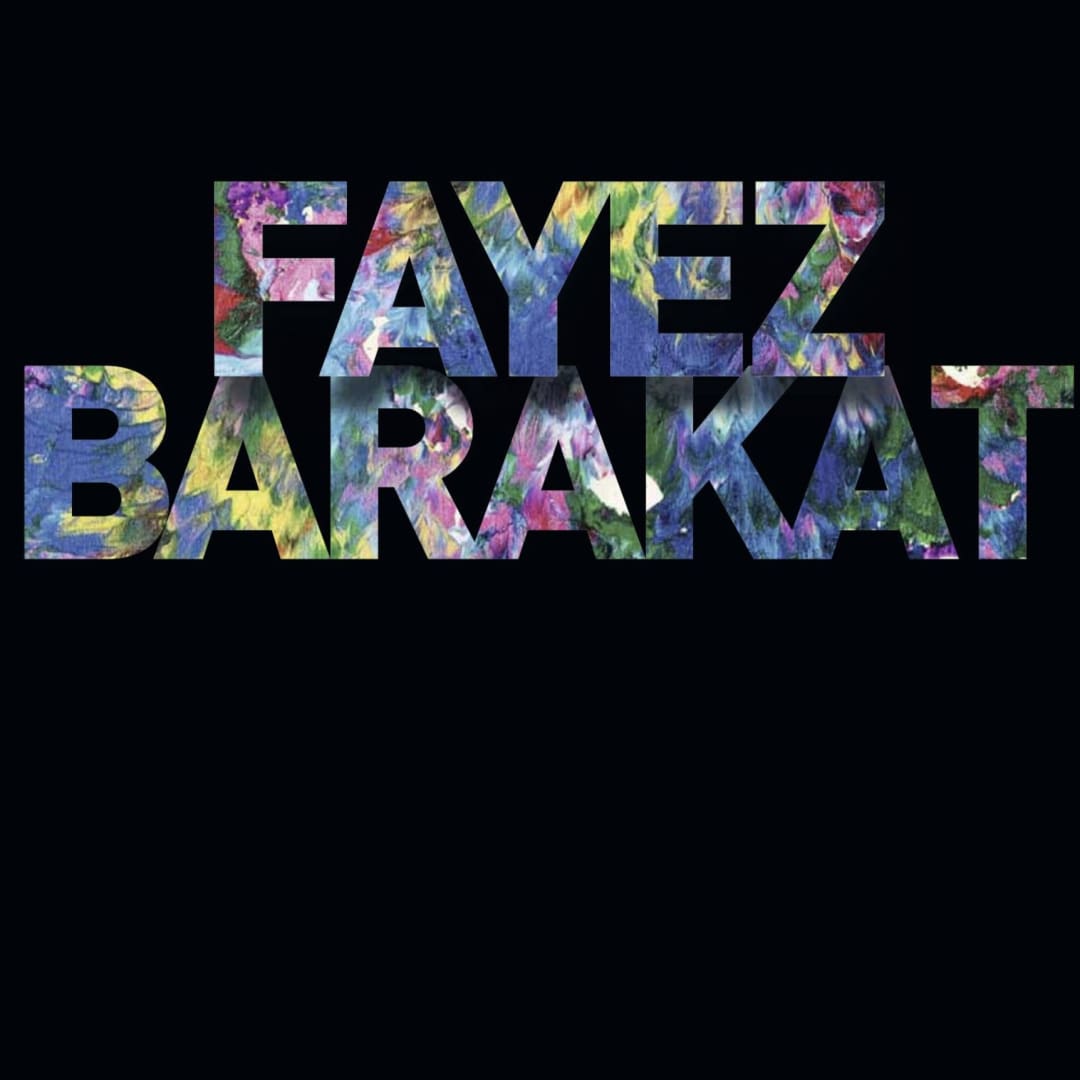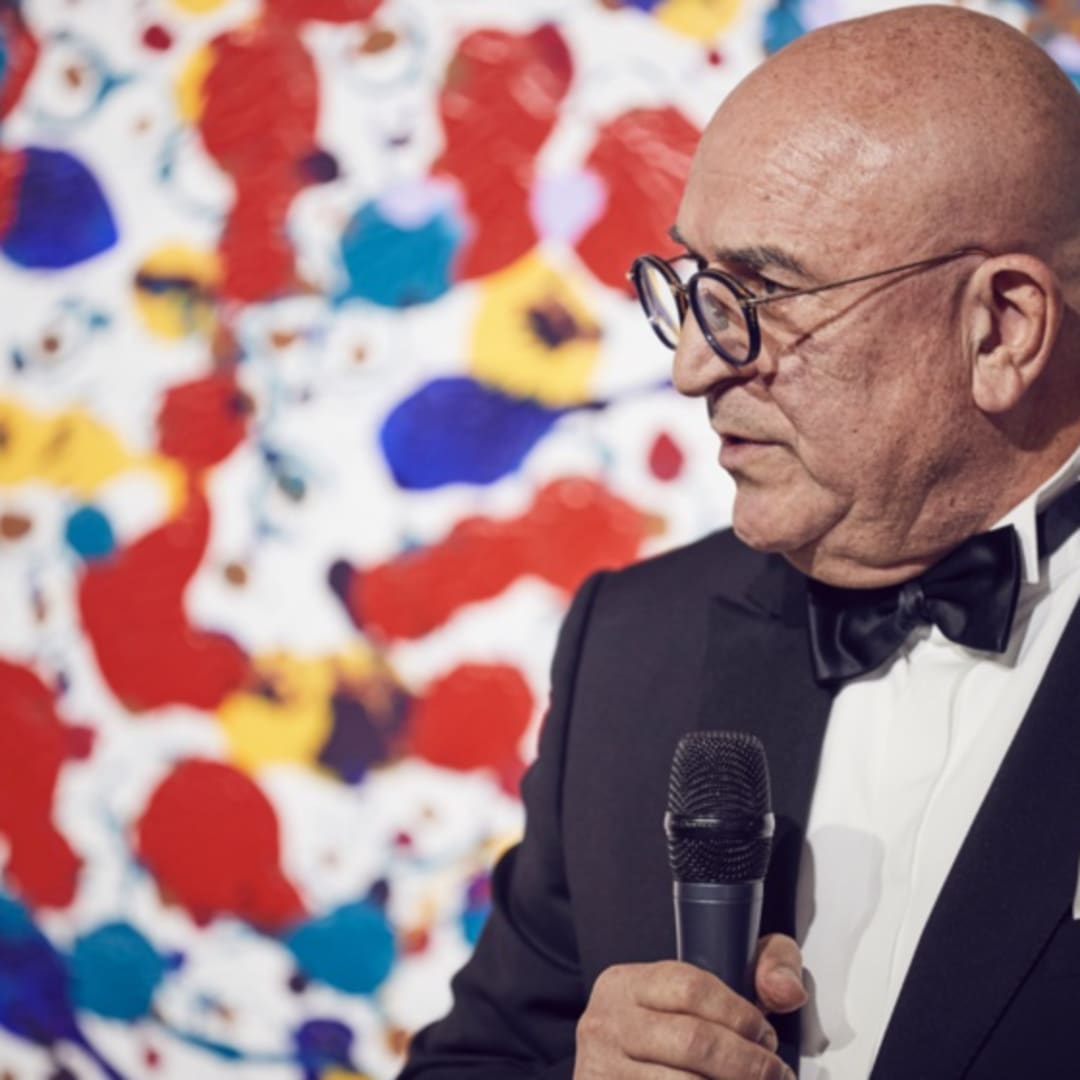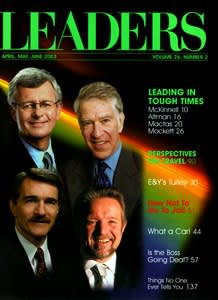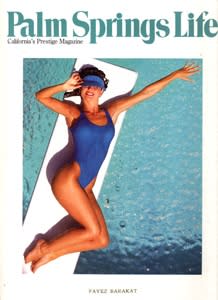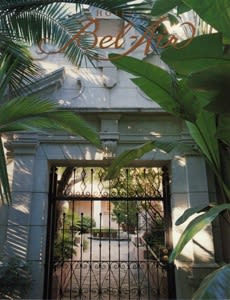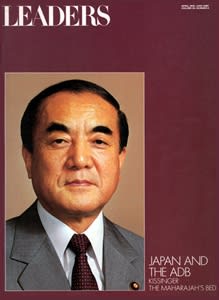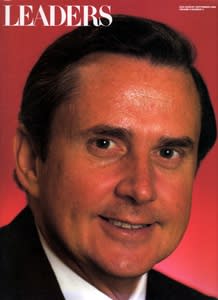Fayez Barakat is best known as one of the world’s most important dealers and collectors of ancient art. His gallery in London is a treasure trove, filled to the brim with every age and culture ranging from Maya crystal skulls to Mogul statuary and Egyptian jewellery. However, whilst Barakat’s extensive knowledge has helped shape key private and public collections, another side to him that is fast becoming apparent: he is a prolific and highly accomplished painter who has managed over the last few years to establish an eclectic and allusive body of work.
Employing an astonishingly wide range of techniques, Fayez Barakat paints like other artists sketch; that is, he paints restlessly, loosely, energetically and gives over free rein to the flow of ideas going through him. The paintings, partly triggered by visions and ideas the arts has (he calls them "concerts of ideas, colours and themes"), are mostly executed at night between 2am and 5am or in any other free time he has from running and managing his galleries across three separate time zones. Other ideas come from the environment in which he paints, ranging as they do from his studios in Jordan, Los Angeles, Seoul, Marrekech, Hong Kong and London. The themes of his paintings are likewise varied and allusive, encompassing ideas such as fantasy, meditation, ecstasy and nirvana. These works not only embody his visions and feelings though, they often engage him in a process of what can be only called transcendence. In one recent interview he has spoken about the inner energies driving him and the sense that he becomes a "medium" of sorts channelling ideas and techniques in a manner that even surprises him. As the artist has noted, with a look of slight bewilderment, it is for him "beyond belief" that he should be so obsessed (if not possessed) by the need to paint every day.
So what, we may ask, is going on here: an expert in the field of ancient art and a respected collector in his own right emerges as an artist whose seemingly insatiable appetite for making paintings shows no sign of abating. Is this unusual or are we seeing a natural progression from collector to producer, the end effect of many years spent nit acting upon a desire to make work whilst at the same time being surrounded by some of the highest quality art and artefacts in the world? Is this the story of a man destined to focus on collecting and the day-to-day running of his galleries at the expense of that which gave him most pleasure: painting? And if this is the visual manifestation of all that pent up creative energy, what then are we witnessing here?
Before those questions can be more fully answered, it is interesting that Barakat has not just arrived at painting but was an accomplished painter as a young man, garnering plaudits for his works and numerous invitations to show them. Trained at the Bezalel Academy of Art in Jerusalem, he mastered an array of formal skills but nevertheless felt somehow constrained by their rigid discipline. Something else was needed. We should also note here the fact that as a young man Barakat worked alongside the world-famous British archaeologist Dr. Kathleen Kenyon, a leading archaeologist of Neolithic culture who is best known for her Jericho excavations between 1952 and 1958. It was with Kenyon that Barakat sorted and identified shards from her work in Jerusalem and it was at this time that he became an expert in both pottery classification and the principles of field archaeology. However, due to his career as a collector and dealer in antiquities and personal reasons, this youthful creative promise was put aside until relatively recently. The archaeological inclination, however, when viewed alongside his pursuit of formal painting skills, can be still seen in Barakat's work in the manner in which ideas on the canvas seem to be constantly in the process of coming to the fore but, somewhat paradoxically, are being unearthed through a process of accretion and addition of paint.
Taking up a paintbrush again after so many years of not painting was therefore a transcendental if not ecstatic in its force for the artist, returning him to a time when it seemed he would take a different path in life and yet reconnecting a number of passions for archaeology, ideas, art history, and the sheer force of being creative. Working like a sleepwalker through the night, he paints as if is completely absorbed in the creative process and legacy of the art and artefacts he has lived with for so long.
-
Our History
-
A Preface for The Collection
 By Gerald A. Larue
By Gerald A. Larue
It is a pleasure and an honor to write the preface for this dramatic representation of objets d’art in the magnificent collection of Fayez Barakat.
Outside of well-renowned museums, this is, without doubt, one of the finest assemblages of its kind anywhere in the world. What is depicted in this volume is only a fraction of the total collection that includes marvelous marble sculptings, exquisite glass vessels, figures of ancient gods and goddesses in silver, bronze, stone, and clay, as well as priceless jewelry. Bronze, silver, and gold coins – some mounted to be worn as jewelry, some in sets for collectors – precious scarabs and seals, beautiful icons, together with more commonplace oil lamps and household vessels from the ancient past complement this wonderful exhibition of creative artistry.
When I first met Fayez (who is also known as Viktor) in 1967, I was on leave from the University of Southern California to continue research in archaeology as a resident fellow of Hebrew Union College in Jerusalem. Fayez was seventeen years old – a bright, personable young man, amazingly well informed about archaeology – a subject that had fascinated him since earliest childhood. He is of the fourth generation of the Barakat family, which is well known for its collection of ancient Middle Eastern art. His grandfather, who owned large vineyards near Jerusalem was keenly aware of the aesthetic beauty of artifacts unearthed from time to time as his fields were plowed or when tombs were found on his property. He encouraged workmen to bring the objects to him for preservation.
As a young boy Fayez worked beside the famous British archaeologist, Dr. Kathleen Kenyon, sorting and identifying shards from her excavation in the ancient Jerusalem of King David’s time. Fayez became familiar with pottery classifications and with the basic principles of field archaeology.
His facility in learning languages was startling. With his photographic memory he could quickly master a new language, including vocabulary and grammar, and conduct intelligent conversations with visitors from different countries in Europe in their native languages.
At the age of fourteen, when he was deeply engrossed in reading medical textbooks in preparation for his intended career in medicine, he met Father James McGuire of Loyola University. The reverend father, as a good teacher, put Fayez to the test. He thumbed through the texts and asked questions of the young man. So impressed was he by Fayez’s answer that he offered him a Fullbright scholarship.
When the papers arrived in Jerusalem, Fayez’s father distressed at the thought of being separated from his son, quietly secreted the documents until the time for accepting the invitation had elapsed.
During 1967 artifacts from plundered tombs in the hill country west of Hebron began to stream into Jerusalem. Fayez, like other merchants, made purchases from the villagers. He acquired numerous common household objects from periods extending from Middle Bronze I (2100-1900 B.C. ) through the Byzantine era (A.D. sixth century). Soon he began to accept only those choice items that represented the finest statements of the ancient craftsman’s art.
About this same time, Dr. Nelson Glueck, president of Hebrew Union College, a world-renowned scholar and archaeologist, invited Fayez to attend classes in the Jerusalem school. Soon he was enrolled in courses taught by the eminent Middle Eastern archaeologist, Dr. William Denver. Under the guidance of Father Spiekerman, director of the Museum of the Flagellation at the Second Station of the cross in Jerusalem, he researched ancient coinage. He read and studied archaeological journals, excavation reports, and the best sources in art history. Consequently, he has become one of those unique individuals whose knowledge combines the results of classroom studies, extensive reading and research, and practical field experience with intimate familiarity with artifacts developed through handling thousands of items.
Today, Fayez is more than a merchant; he is a connoisseur devoted to a dream. He believes he owes something to the archaeologists and instructors who helped develop his expertise-and indeed, to all who probe the past and help us appreciate our rich human heritage. He has undertaken a duty to preserve the past and to save from possible damage and loss these exquisite artistic statements. He has witnessed the destruction of precious ancient objects by simple villagers who feared fines for possession of such items or perhaps confiscation by the government of the land on which they were found. Once an artifact is destroyed, whatever it might tell us of the past is beyond recovery and its usefulness as a clue to the understanding the creative spirit is forever lost.
Fayez asked himself, "what can I do to preserve these precious objects for posterity?" He knew that an item sold by a merchant to a collector might remain in the new owner’s possession for a generation, but there was a good chance that it would ultimately end up in a museum.
He decided to do two things: on the one hand he would become a merchant for these museum-quality treasures; on the other hand he would lay plans for the Barakat Family Museum that would one day house these most exquisite expressions of the ancient past. This is his continuing dream and together with his deep love of beauty and creativity, this is what motivates him.
To some he may appear open to the charge of encouraging vandalism because he purchases objects from plundered sites. But the protection of ancient sites is the responsibility of the respective governments. Once an object has been removed from its setting its true provenance is forever lost. Fayez Barakat is salvaging art objects for future generations. What he has gathered, as illustrated in this volume, testifies to the validity of his dream. His magnificent, ever-expanding collection now includes objects from biblical lands, Africa, Europe, and the Americas. Here he provides pictorial evidence of his splendid collection. Here are exceptional expressions of ancient craftsmanship. Here is beauty from our most distant past.
Those who have the privilege of meeting Fayez Barakat at his place of business on Rodeo Drive in Beverly Hills, California, or in Jerusalem, or in Bethlehem where he has other shops, discover the warm charm that has endeared him to so many. Behind the quiet, calm businessman there lies the devoted connoisseur, the true expert, the man in love with what he is doing. His delightful sense of humor, his integrity, his deep concern for human kind, his love for people in the present and for things from the past, his ability to talk about important life issues with wisdom and compassion are now richly enhanced by what was not present when I first knew him in 1967 – the support of his beautiful, caring wife, Malak, and their two delightful children, Sufian and Joanna.
The Barakat Collection is so large, so magnificent, so splendid that it staggers the mind. On every shelf there are rare, exquisite, beautiful objects in gold, in silver, in ivory, and in stone. Some are huge like the sculpture of Alexander the Great, or the basalt lintel with carved menorah in the style of the Second-Temple period, or the carved marble sarcophagus. Some are of delicately laced gold like the Hellenistic hairnet, some are of wrought glass including perfume vials and vessels with human faces.
The collection will continue to grow. Those of us who have the privilege of enjoying it owe a lasting debt of gratitude to Fayez Barakat for making these marvelous works of art accessible to us and for displaying them in this splendid volume.
GERALD A. LARUE
Emeritus Professor of Biblical History and Archaeology
Adjunct Professor of Gerontology
University of Southern California
